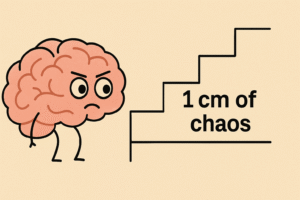Fun fact: Every second, bacteria and viruses are locked in microscopic battles across oceans, soil, and even inside your body—these tiny wars have led to some of the biggest breakthroughs in modern science, including CRISPR!
In the world of science, some of the most remarkable innovations come from the tiniest places. One such innovation is CRISPR (Clustered Regularly Interspaced Short Palindromic Repeats)—a revolutionary gene-editing tool that has transformed biology, agriculture, and medicine. But did you know this powerful tool was born from a hidden battle between bacteria and viruses?
In this blog, titled “How Microbial Warfare Sparked the CRISPR Revolution—and What’s Coming Next”, we’ll explore how ancient microbial defence systems have not only given us CRISPR, but may also lead to a new generation of tools that could fight disease, make diagnostics smarter, and shape the future of gene therapy.
The Ancient Arms Race Between Microbes and Viruses
Across the planet, from ocean depths to your gut, bacteria constantly battle viruses known as bacteriophages—tiny invaders that infect and destroy bacterial cells. This war isn’t just for survival. It’s also a creative laboratory, where microbes evolve tools to fight back—and where scientists find inspiration.
Bacteria have evolved a range of defence systems. Some act like scissors, chopping viral DNA to pieces. Others trigger self-destruction to protect neighbouring bacteria. In response, viruses evolve counter-defences to disable or bypass these systems. It’s a biological arms race that’s been going on for billions of years.
CRISPR: A Game-Changer Born from Microbial Survival
Discovered in the early 2010s, CRISPR–Cas (CRISPR-associated proteins) systems are part of a bacterial immune system that recognizes and slices up viral DNA. Scientists quickly saw its potential as a tool to edit genes with extreme precision—like cutting and pasting sections of a book.
CRISPR became a scientific sensation. It enabled everything from modifying crop DNA to designing gene therapies for diseases like sickle cell anaemia. Creators of it were awarded the Nobel Prize in Chemistry in 2020. And biotech companies like Editas Medicine (a U.S.-based firm focused on developing CRISPR therapies) and CRISPR Therapeutics (a gene-editing biotech firm based in Switzerland) attracted billions in investment.
But the microbial world doesn’t stop at CRISPR. It’s just the beginning.

Beyond CRISPR: The Next Wave of Microbial Tools
CBASS: The Ancient Cousin of Human Immunity
One exciting discovery is CBASS (Cyclic Oligonucleotide-Based Anti-Phage Signaling System), a bacterial system surprisingly similar to the cGAS–STING (cyclic GMP-AMP Synthase–Stimulator of Interferon Genes) pathway in humans.
CBASS detects invading DNA and sets off a chain reaction that kills the infected cell, similar to how our immune system works. Scientists are now exploring CBASS molecules to create vaccine adjuvants (substances that enhance immune responses) or anti-inflammatory drugs.
Gasdermins: Tiny Suicide Switches
Another remarkable find is gasdermin-like proteins in bacteria. In humans, gasdermins poke holes in infected cells, causing them to die and stop the spread of viruses. Microbes seem to have developed the same strategy. These discoveries suggest that some human immune functions may have evolutionary roots in bacteria!
Viperins and Thoeris: Microbial and Plant Immunity Cross Over
Viperins are proteins found in both microbes and humans that halt viral replication. Another system, Thoeris, closely resembles the immune defences found in plants. These examples show that despite billions of years of evolution, nature tends to recycle and reuse smart strategies.
New Tools for the Lab and Clinic
Argonautes: The Simpler CRISPR
Argonaute proteins are another ancient immune tool being repurposed by scientists. These proteins detect and destroy viral RNA or DNA, and unlike CRISPR, they don’t need a PAM (Protospacer Adjacent Motif) to function. That makes them more flexible and easier to use in diagnostics and DNA editing.
Researchers have developed SPARTA, a detection tool based on Argonautes, which lights up or changes colour when it finds specific genetic sequences. Imagine a COVID test that works faster, with higher precision—thanks to Argonautes.
Bonus: Because CRISPR’s intellectual property is already crowded, Argonautes offer a less patent-congested alternative.
TIGR–Tas: The Compact Gene Editor
A team led by Feng Zhang—one of CRISPR’s pioneers at the Broad Institute (a biomedical and genomic research centre in Massachusetts, USA)—discovered a new system called TIGR–Tas (Tandem Interspaced Guide RNA–TIGR-associated system). It works like CRISPR but is smaller and does not require a PAM. This could be a major advantage in gene therapy, where space inside delivery vectors (like viruses) is limited.
Retrons: DNA-Making Machines
Retrons are systems that create single-stranded DNA inside cells using reverse transcriptase (an enzyme that copies RNA into DNA). Originally mysterious, retrons are now known to be part of bacterial defence.
Scientists like Seth Shipman at the Gladstone Institutes (a biomedical research organization in California, USA) are using retrons to help CRISPR work better. Instead of adding DNA from outside, cells can make their own templates internally, much faster and more efficiently.
The Role of Viral Counter-Defences
Of course, viruses don’t sit idle. They’ve evolved anti-CRISPR proteins that can block, disable, or confuse bacterial defences. But this isn’t bad news—in fact, it’s another toolbox for scientists.
For instance, anti-CRISPRs can act as an “off switch” for CRISPR-based therapies. They help reduce off-target effects, making treatments safer. Acrigen Biosciences (a biotechnology company in Alameda, California) is already exploring this strategy for precise gene therapy applications.
Phage Therapy and Bioengineered Bacteria
Bacteriophages, the viruses that infect bacteria, are getting a makeover. Companies like Locus Biosciences (a biotech firm in North Carolina, USA) are designing phages that carry CRISPR systems to kill harmful bacteria. In initial clinical trials for urinary tract infections, their phage therapy reduced symptoms and cleared out dangerous bacteria.
This approach could revolutionize antibiotic alternatives, especially as bacteria become resistant to conventional drugs.
What the Future Holds: Diagnostics, Treatments, and Beyond
The microbial world is still largely uncharted. With machine learning and AI-powered genome analysis, researchers are identifying thousands of new defence systems. Some may inspire:
- New antibiotics based on toxin–antitoxin systems like retrons
- Immunomodulators for treating autoimmune diseases
- Oncology tools that mimic microbial self-destruct buttons
And as scientists collaborate across fields—immunology, virology, microbiology, and bioengineering—expect many of these tools to cross into human healthcare.
Conclusion
The microbial arms race that gifted us CRISPR is far from over—and that’s a good thing. As bacteria and viruses continue their invisible war, we get a front-row seat to nature’s innovation lab. From gene editors to diagnostics and therapies, the next big breakthrough may already be unfolding in a drop of seawater or a spoonful of soil.
So, the next time you hear about a bacteria-fighting virus or a new gene-editing discovery, remember: microbial warfare isn’t just a battle—it’s a treasure hunt for the future of medicine.
Author’s Note
As a science communicator, I find it incredible how life’s smallest forms can inspire solutions to humanity’s biggest challenges. Microbial warfare is no longer just a biological curiosity—it’s a gateway to transformative technologies that could touch every corner of healthcare and biotechnology.
G.C., Ecosociosphere contributor.




